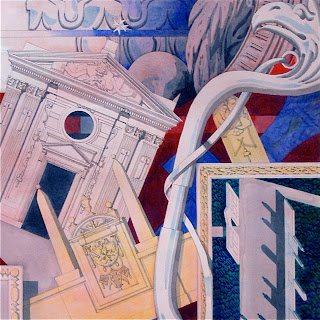A precis by Chen Xu
Jane Jacobs was an American-born Canadian writer and activist with a primary interest in communities and urban planning and decay. She is best known for The Death and Life of Great American Cities (1961), a powerful critique of the urban renewal policies of the 1950s in the United States. The book has been credited with reaching beyond planning issues to influence the spirit of the times.
In my opinion Jacobs observes cities and she is a very careful observer. She watches the cities from a normal person’s perspective. She analyses what she sees. She has the enthusiasm and sense of responsibility. She believes that people should be responsible for watching their own surroundings, thereby bringing safety and helping to make the area vibrant.
For example, Jacobs talks about sidewalks, neighborhood parks and city neighbors, and how these elements form a the peculiar nature of cities. How important are these elements? We are familiar with the things which Jane Jacobs talks about because they are around us. We can see them in our daily life, such as sidewalks, parks, neighbors and so on.
Opposing expressways and supporting neighborhoods were common themes in her life. In 1962, she was the chairperson of the "Joint Committee to Stop the Lower Manhattan Expressway", when the downtown expressway plan was stopped. She was arrested during a demonstration on April 10, 1968. In the same year, Jacobs moved to Toronto, where she lived until her death. She quickly became a leading figure in her new city and helped stop the proposed Spadina Expressway. A frequent theme of her work was to ask whether we are building cities for people or for cars.
Jane Jacobs's critique is that this kind of urban planning and lifestyle, will make the city lose its vitality, resulting in a loss of pleasure. She believed the city is an organism, detailed and diversified, so that economic and social activities mixed with each other produce vibrant city, so it should be seen in the context of life science urban rehabilitation, rather than cold figures, scientific planning razed to the name of a large-scale urban redevelopment. A great city values the diversity, and this diversity is the need to maintain a certain environment, such as street life, the importance of neighborhood life is to control the car and refuse repetition of the urban landscape.
Jane Jacobs thinks the first thing to understand is that the public peace - the sidewalk and street of the cities - is not primarily kept by the police, necessary as police are. It is kept primarily by an intricate, almost unconscious network of voluntary controls and standards among people themselves.
Some people think that the middle-class or upper-class family build good neighborhoods and poor families fail to. That is wrong. For example,within the poverty of the North End of Boston, or within the poverty of the West Greenwich Village waterfront neighborhoods, good neighborhoods were created. In the meantimes, within the upper-class Boston ‘s South End, bad neighborhoods were created, neighborhoods which internal failure grew greater with time instead of less.
Throughout the 1950s, the cost of building rose. There is a simple fact that no matter how steady the construction costs are. a old building requires less income that one which has not yet paid off its capital costs. Among the most admirable and enjoyable sights to be found along the sidewalks of big cities are the ingenious adaptations of old quarters to news uses. The town-house parlor that becomes a craftsman’s showroom, the stable that becomes a house, the basement becomes an immigrants’ club. the garage that becomes a theatre, the warehouse becomes a factory. These are the signs of life and are forever ocourring where a city has vitality.
Fifth Avenue in New York is an example has been mentioned many times in Jacobs’ book. She thinks this is good area for preserving the aged buildings that makes this area vibrant. It shows how good a city can be. Between 40th Street and 59th Street it is tremendously diverse in its large and small shops, bank buildings, office buildings, churches and institutions. Its architecture express these differences in use, and differences accrue from the varying ages of the buildings, difference in technology and the history of taste. But 5th Avenue does not look disorganized.They are sensible and natural contrasts and differences. The whole hangs together remarkably well.
In contrast railway tracks, waterfronts, campuses, expressways, large parking areas, and large parks have much in common with each other, insofar their tendency to create vacuums. As many city elements as possible must be used to build a lively, mixed territory, and as few as possible must be used to create unnecessary boundaries.
Automobiles are hardly destroyers of cities. The fact is that there are too many cars on the roads! Today, cars and cities should have been allies, however, they seem to be enemies.
When life science developed quickly, people hoped that they would find a new method to analyse the city. As to whether there is some connection between science and urban planning, Jane Jacobs does not confirm her attitude. Personally, I believe Cities are different from nature. cities include economy, society, social activities. Urban planning can simply copy from life science.
Dull, inert cities, it is true, do contain the seeds of their own destruction and little else. But lively, diverse, intense cities contain the seeds of their own regeneration, with energy enough to overcome problems and needs outside themselves.







